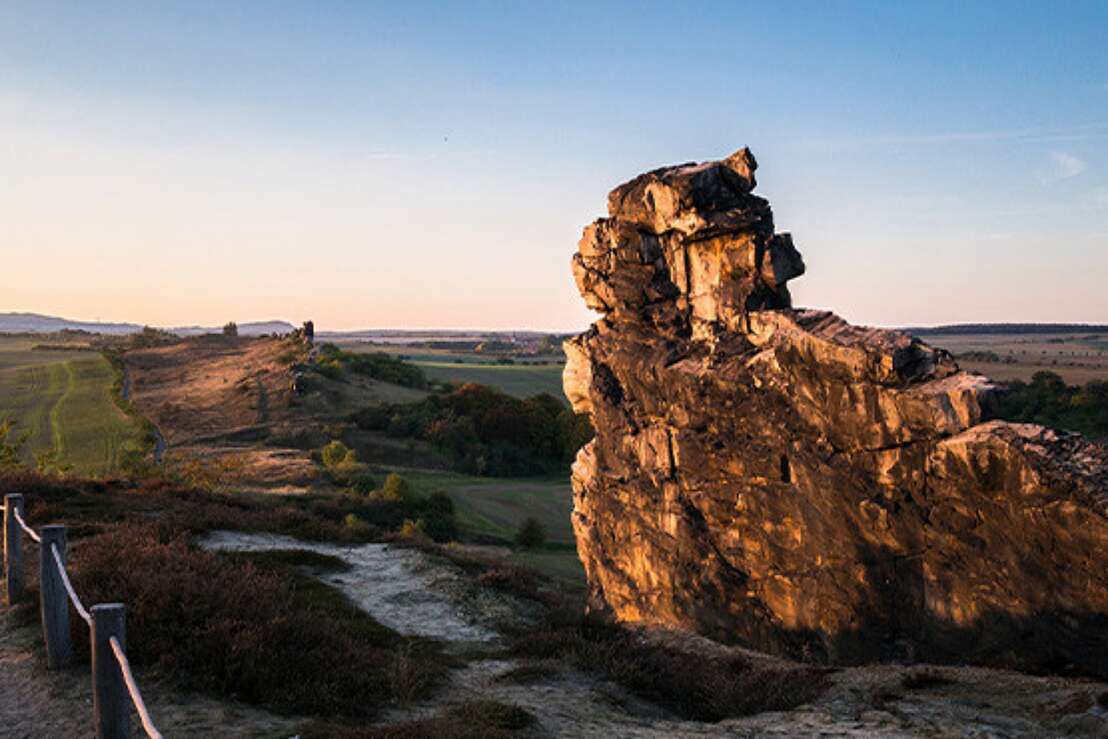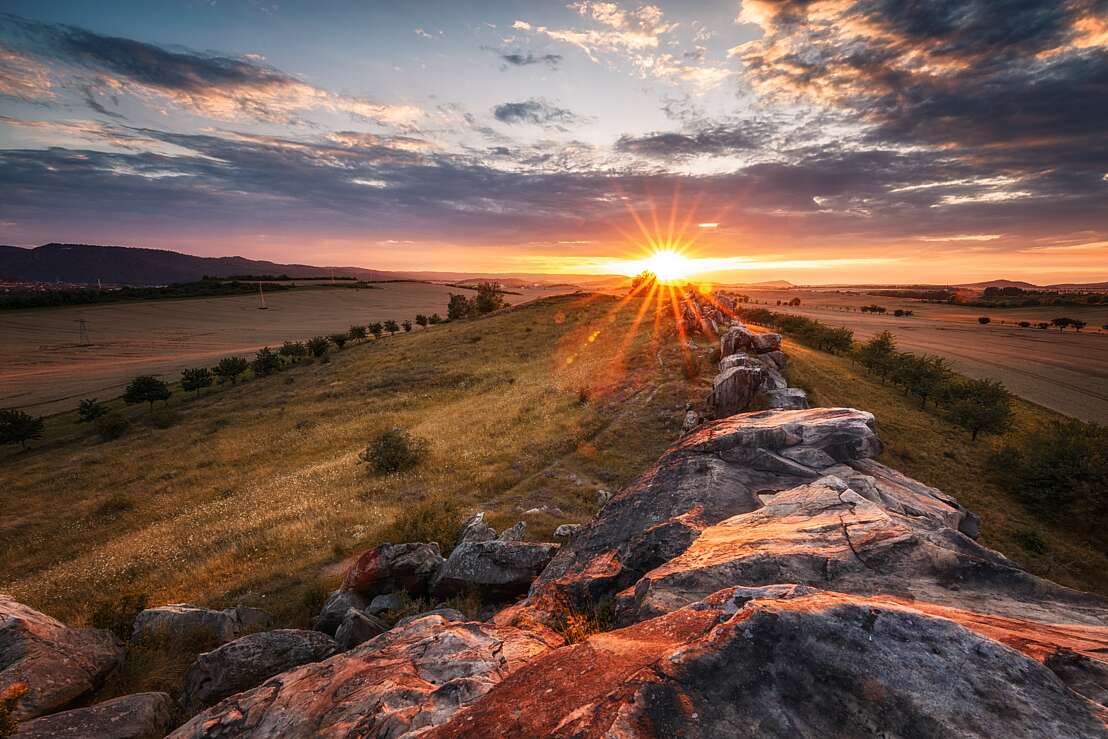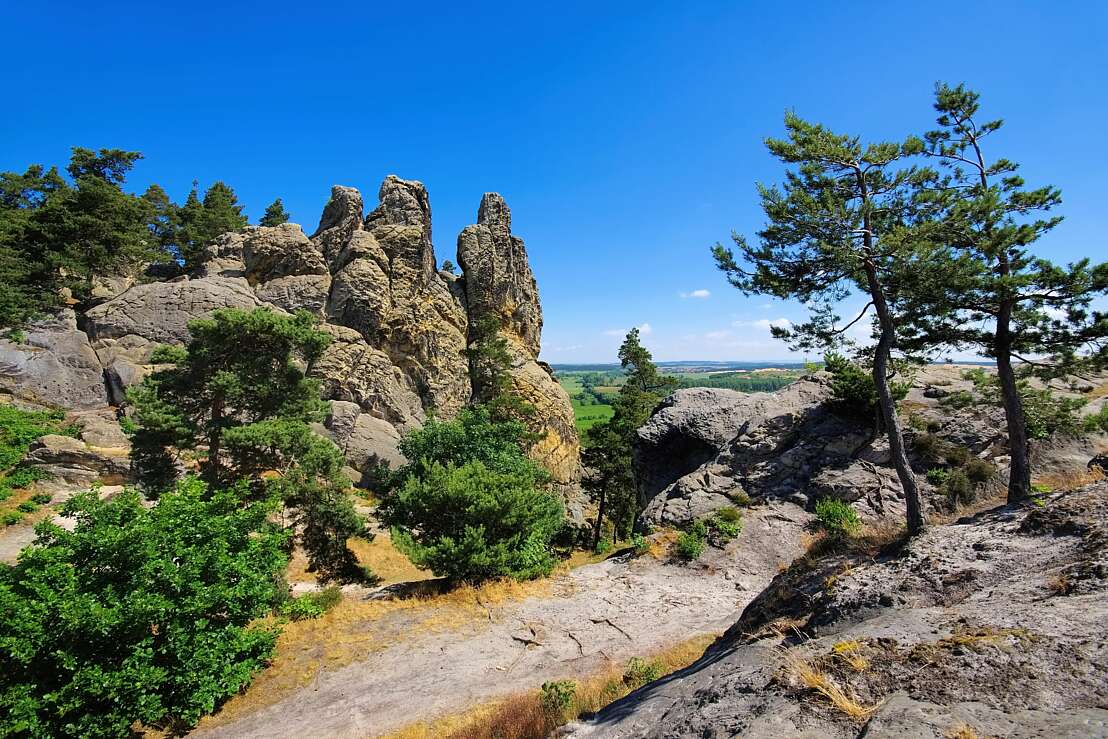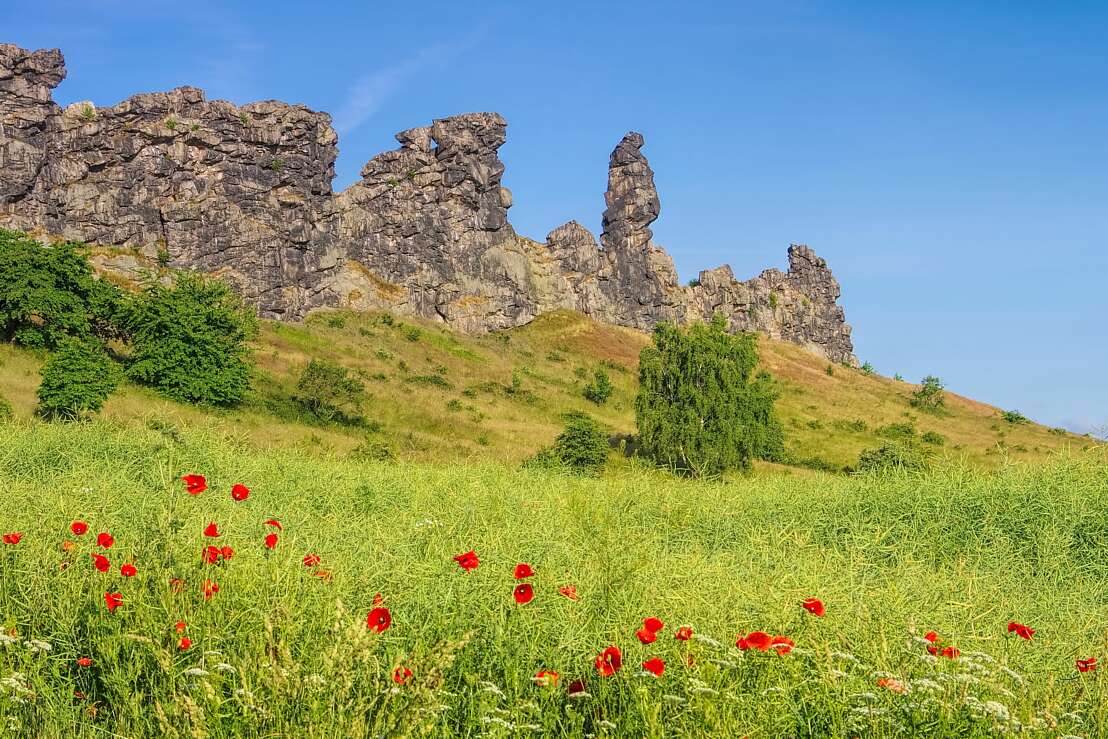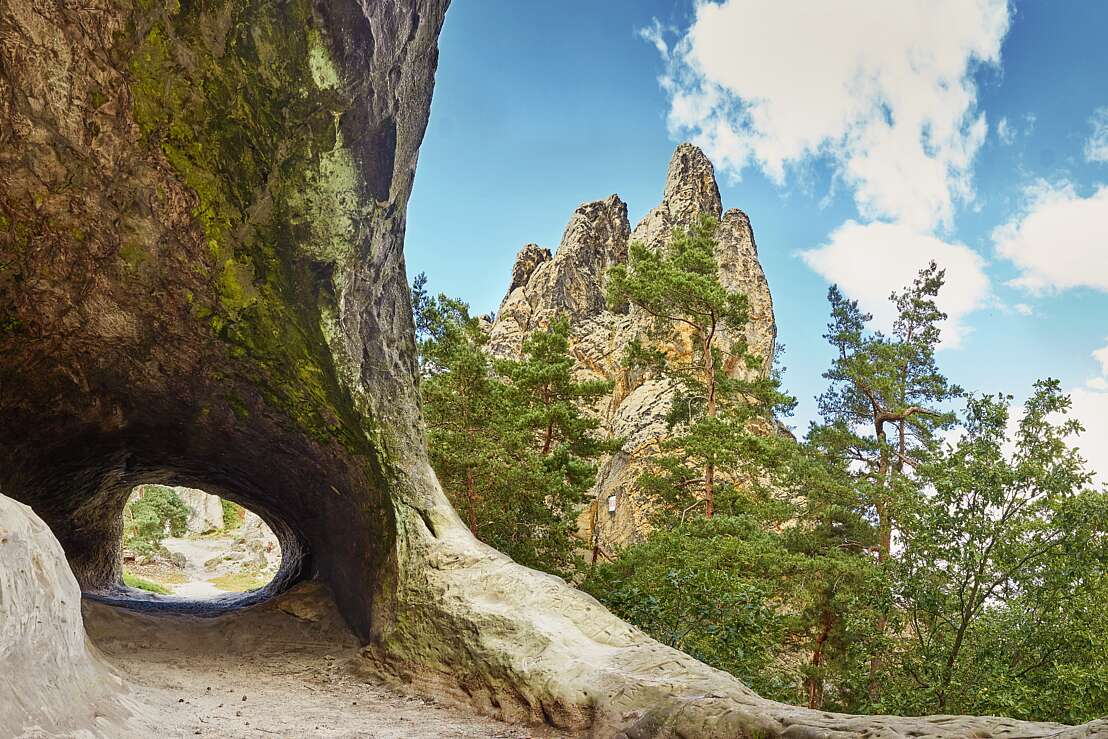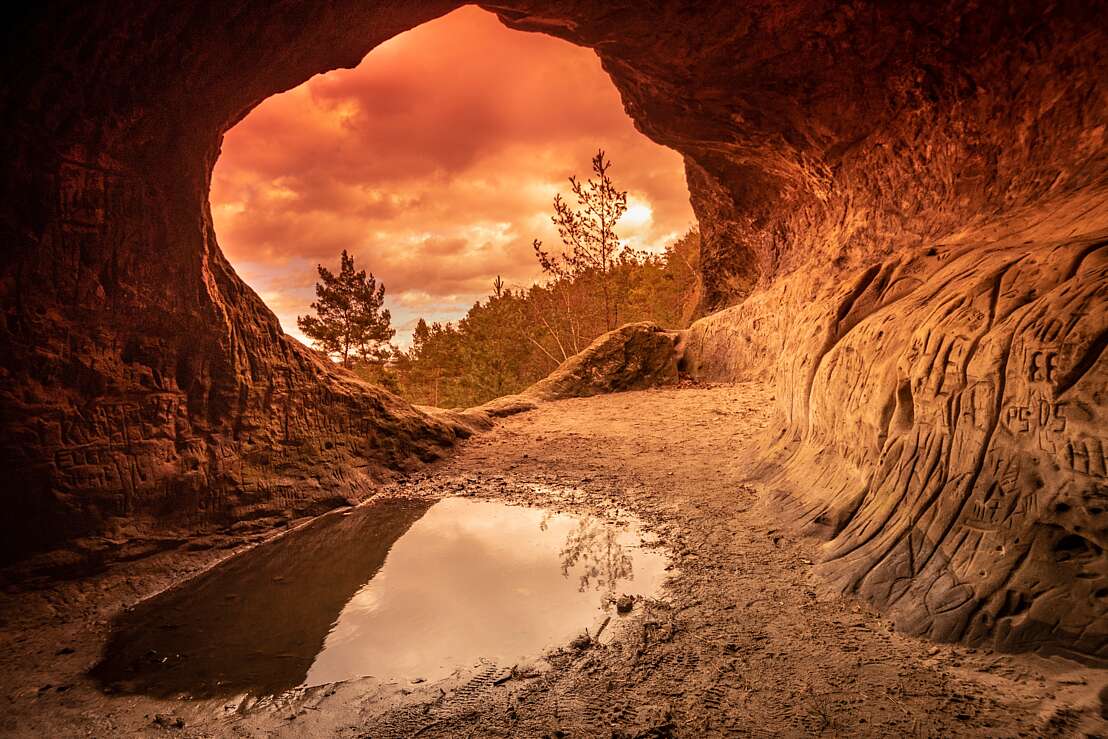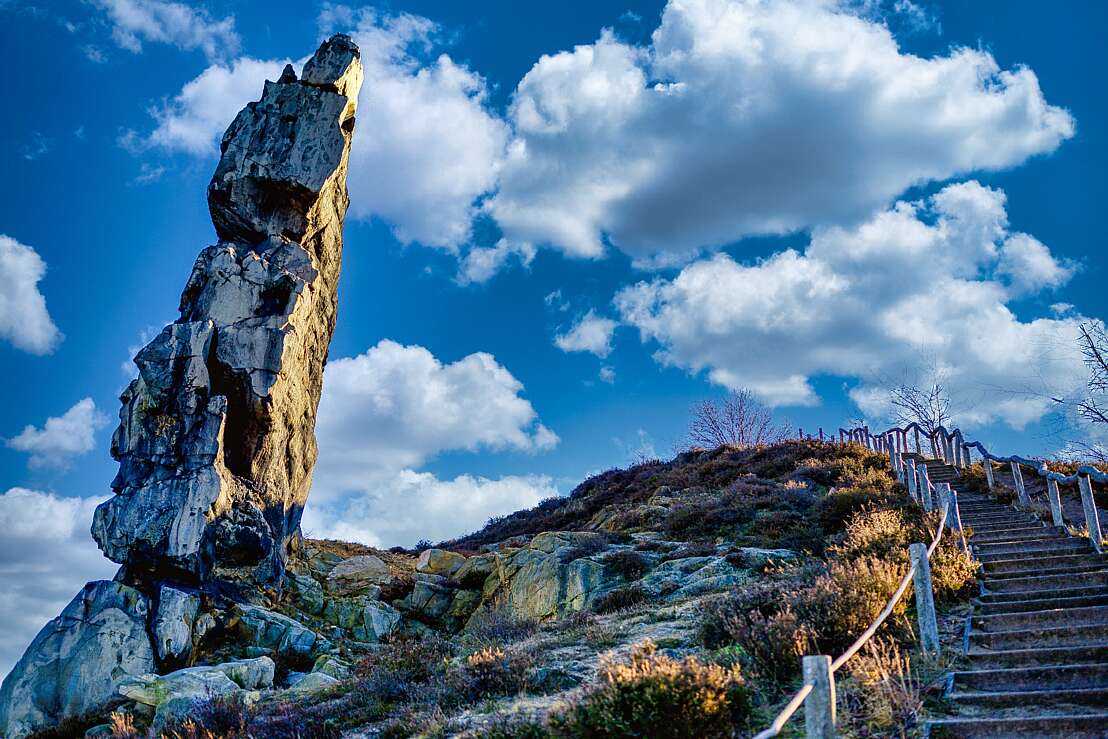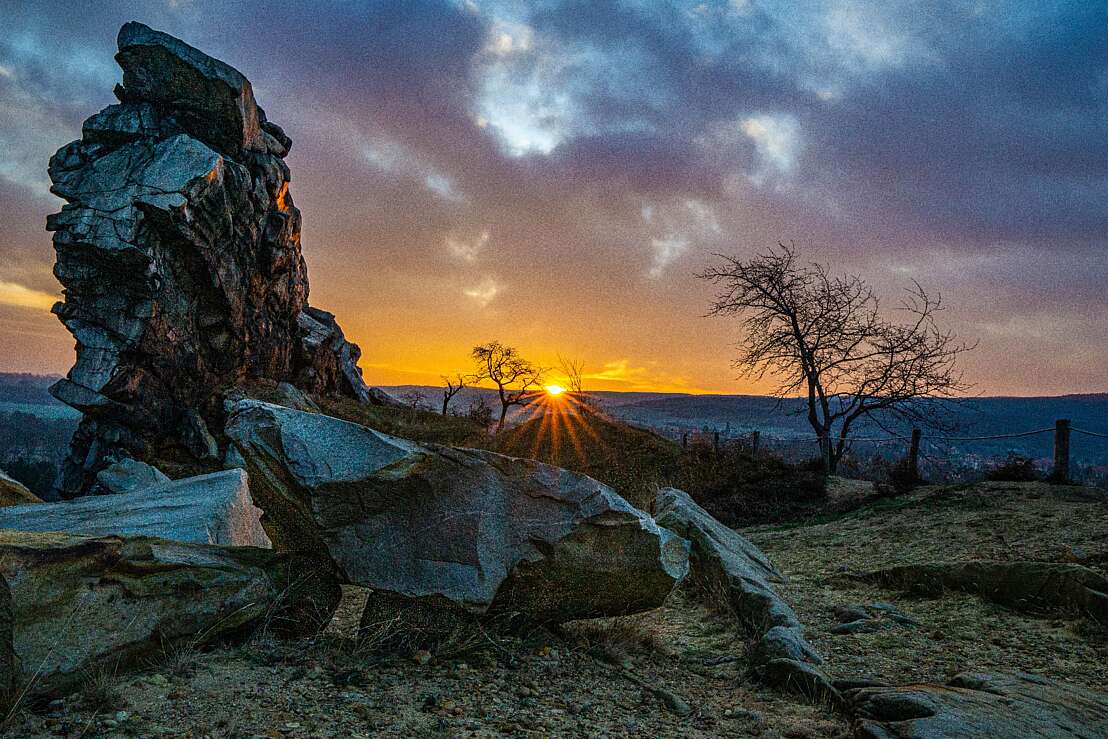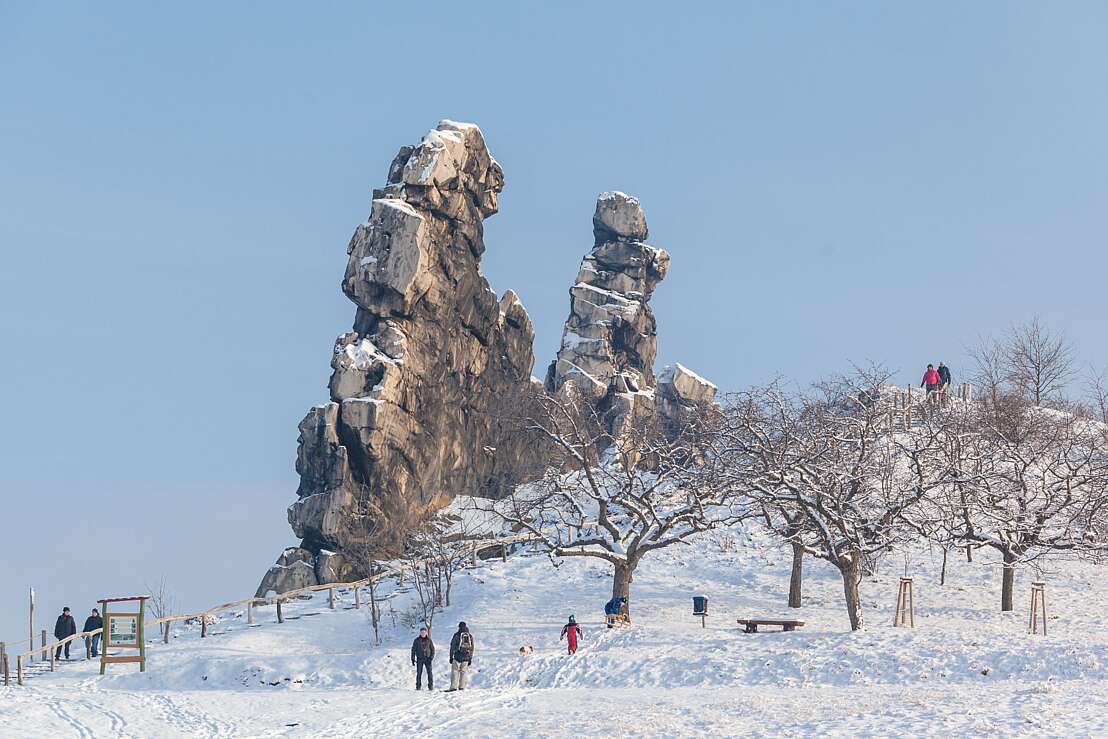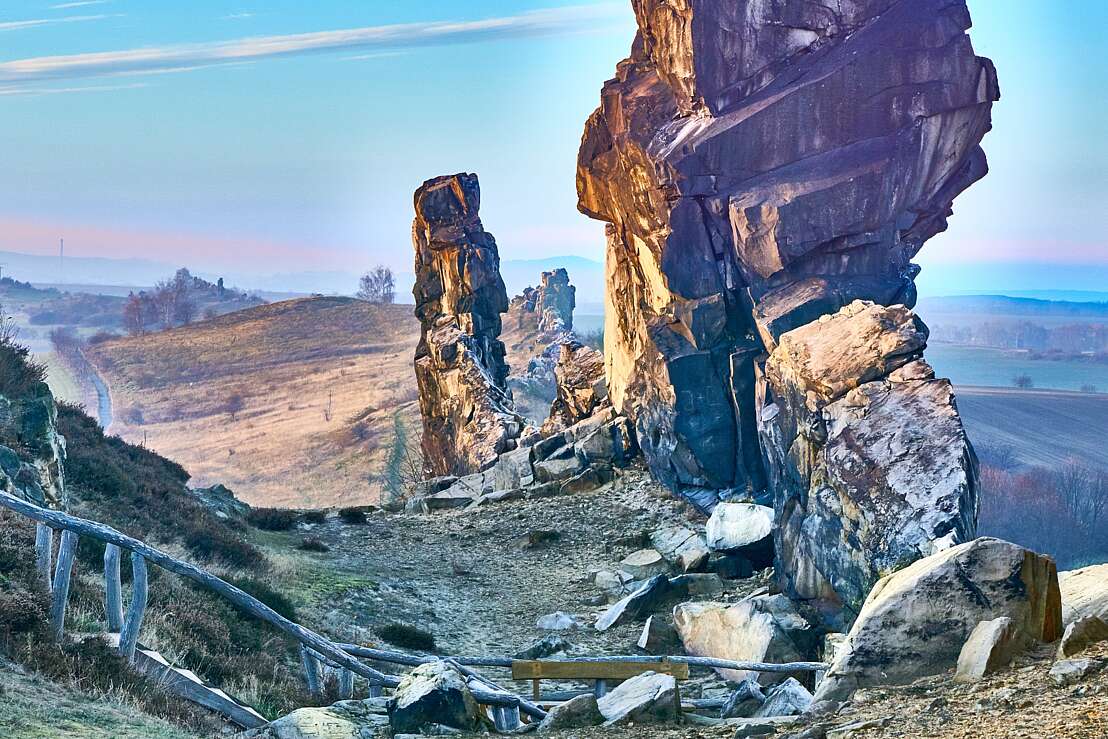Teufelsmauer
Shrouded in legend, adventurous and wild
Excursion destinationsHarzspots Vacation planner
| Name | Date |
|---|
According to legend, the Devil's Wall is the result of devilish rage. Of course, the mountain range was not created by diabolical but by geological forces. But in any case, it is a bit eerie here. The Devil's Wall stretches along the edge of the Harz Mountains like a fortified wall with battlements and towers. The most impressive part lies between Thale and Neinstedt. Curious? Then let us take you on a legendary and adventurous journey along the Devil's Wall.
Grandfather Rock, Hamburg Coat of Arms or Devil's Chair - the rock formations have special names because of their appearance. Partly protruding from the plain as a rock spur, partly recognisable as a mountain range, the Devil's Wall in the Harz Mountains is a fascinating natural spectacle. Photographers often capture the mystical moments at sunset.
Some people imagine themselves on a film set from "Lord of the Rings", for others it is an unforgettable adventure and a real "eye opener".
Legend vs. science
According to legend, God and the devil agreed that the latter should obtain as much land as he could wall up until the first cockcrow. So the devil immediately set to work and toiled all night. As the cock of a farmer's wife was already crowing at three o'clock in the morning, the devil, enraged, cut up the already finished parts of the wall. There was a hellish roar, the top layers of stone collapsed and smashed to the ground. All that remained were bizarre rocks jutting into the landscape. Or so the legend has it.
But fossilised sea creatures testify that the northern Harz was a coastal landscape about 80 million years ago. Geologists explain it like this: the Devil's Wall is a strata rib on the northern edge of the Harz - built up from hard sandstone layers that are steeply upright here directly on the edge of the Harz. Silicic acid glues the sandstone grains together and makes the 80-million-year-old sandstone extremely resistant to wind and weather. However, the layers are not evenly consolidated: Harder sections alternate with softer ones, and therefore the Devil's Wall has larger and smaller gaps.
Good to know: The area of the Devil's Wall was placed under protection on 8 July 1852 by Quedlinburg District Administrator Weyhe as an "object of folk legend and a group of rocks famous as a rare natural feature" by prohibiting any further quarrying of the sandstone.
Always along the wall - through sun-drenched woods between Grandfather Rock and the Hamburg coat of arms
From time to time, the rocky mountain range, which stretches with interruptions for about 15 kilometres from Blankenburg to Ballenstedt at the foot of the Harz Mountains, looks like a closed bulwark. Then again it is broken up into individual pinnacles and, after another interruption, appears in adventurous shapes near Thale and Neinstedt. Ruggedly jagged sandstone ridges present themselves as "counterstones" at the end of the Devil's Wall between Gernrode and Ballenstedt. At the foot of the wall is a small wood, the Heidelberg, with pretty promenade paths. From here, a comfortable forest path leads to the vantage point of the "Großvater".
Only a few hundred steps behind the Grandfather is the highest point of the Devil's Wall. You can climb the rock at 319 metres on ladders. If the view is good, you can see as far as the Brocken peaks. An interesting trail is the Löbbeckesteig. This trail, which runs all the way to the Sautrog, can be passed without danger and is popular not only with families with children.
The first massif of the Teufelsmauer ends near Timmenrode. The rock formation "Hamburger Wappen" closes this part of the wall. In between are numerous other striking cliffs with imaginative names such as Hohe Sonne, Turnerfelsen, Schweinekopf, Fahnenfelsen, Zwergenhöhle, Teufelskessel or Ludwigsfelsen. The profile of Ludwigsfelsen is reminiscent of Louis XIII, who emigrated to Blankenburg in 1796.
From Timmenrode, an easy hiking trail leads through the southern slope. If you arrive by car, it is best to park it at the house of the volunteer fire brigade in Lindenstraße. Requirements: The climb on the Teufelsmauer requires surefootedness and a head for heights, but without being "alpine" or even dangerous.
Did you know? Goethe visited the legendary sandstone wall as early as 1784 and found it "so strangely beautiful". Let's follow in his footsteps.
Devil's Wall Weddersleben - spectacular and eerily beautiful
This is probably the most impressive section of the Devil's Wall. It lies between Weddersleben and Neinstedt. The starting point for the climb is the car park at the southern entrance to Wedderstedt. Follow the road from Neinstedt in the direction of Quedlinburg. Directly behind the Bode bridge, on the left, is the small car park for hikers, from where you can climb up to the Königstein in a quarter of an hour and continue on the ridge path to the Mittelsteine rock group. Watch out! This strenuous hiking trail leads steeply uphill.
But soon the imposing Mittelsteine and Papensteine of the Teufelsmauer Weddersleben greet you from afar. It's not far now. Once you reach the top, you will be rewarded for all your efforts on the ascent. The atmosphere in this place has a lasting effect. You would like to stay forever in this quiet spot. From the hill you have a wide view of the Brocken - on one side is the Bode Valley and on the other the Königstein.
Others opt for a tour from Gernrode. At the beginning or even at the end of the route, we recommend a visit to the Romanesque collegiate church of St. Cyriakus. The hiking trail stretches over 22 kilometres, the gradients of which should not be underestimated. The end of the tour is the ascent to the most spectacular and attractive part of the Devil's Wall, the Königstein.
Fancy a devilishly great tour?
You can expect a hiking route with magnificent views over the Harz Mountains. Hiking highlights include the Grandmother's Rock, the Grandfather's Rock, the Devil's Wall Climb, the view of Timmenrode and the charming old town of Blankenburg. Last but not least, we recommend a stop at the "Gaststätte Großvater". In this cosy inn, below the Teufelsmauer in Blankenburg, you can enjoy all kinds of delicious refreshments.
Tip: Plan this tour in the early hours of the morning. Particularly at weekends from midday onwards, you have to reckon with a not inconsiderable amount of oncoming traffic on the rather narrow rocky paths.
Climbers and mountain bikers beware!
Some of the rocks on the Teufelsmauer are also open to climbers. These include designated rocks of the Blankenburg and Timmenröder Devil's Wall as well as parts of the Großer Gegenstein. On one of the hiking routes you will also come across a forest ropes course. The climbing course challenges young and old.
Mountain bikers also get their money's worth. However, a good basic level of fitness and advanced biking technique are required for this tour.
Conclusion: Every section of the wall makes the heart of hikers and explorers beat faster.
This rugged sandstone rib leaves nothing to be desired. On your exploration tour, you swing over high steps, squeeze through narrow gorges, hold on to iron railings here and there, admire towering grotesque rocks and enjoy a fabulous view.
Harzspots gives you the
Komoot Harz Region Package for free!
Use our voucher from the Outdoor Navigators Komoot and get the „"Harz Regions Package“ free of charge. From now on you can get to know all hiking and cycling routes digitally and, if you wish, also voice-guided!
 Rating
Rating Rezensionen
Rezensionen